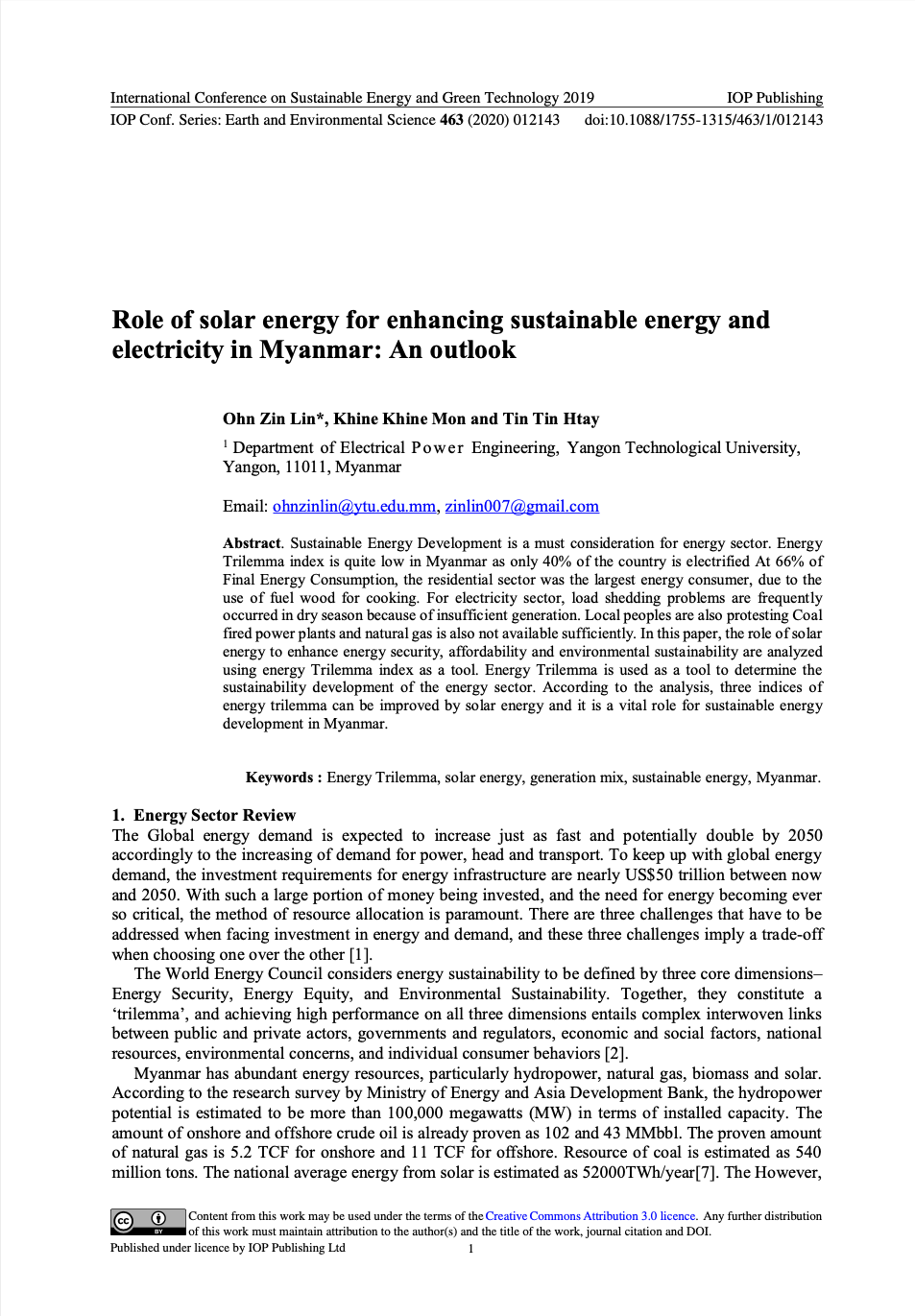
Keyword(s)
Author(s)
Korkeakoski Mika, Mentula Minna, Vähäkari Noora, Luukkanen Jyrki, Kaivo-oja Jari, Alexeeva Anna, Chea Eliyan, Va Dany, Kallio Maarit, Hogarth Nicholas
Country(ies)
Publisher
Published Date
Access
DOI
(a) Finland Futures Research Centre, Turku School of Economics, University of Turku, Korkeavuorenkatu 25 A 2, 00130 Helsinki, Finland
(b) Department of Environmental Science, Royal University of Phnom Penh Russian Federation Boulevard, Toul Kork, Phnom Penh, Cambodia
(c) Faculty of Agriculture and Forestry, Viikki Tropical Resources Institute (VITRI), University of Helsinki, Latokartanonkaari 7, 00014 Helsinki, Finland.
(d) Helsinki Institute of Sustainability Science (HELSUS), University of Helsinki, Yliopistonkatu 3, 00014Helsinki, Finland
The aim of this article is to analyse the current situation of access to energy (in relation to SDG 7) and energy usage behaviour in households in two provinces in Cambodia, namely Pursat and Kampong Cham. The analytical framework is based on the energy ladder model and the energy stacking model as a starting point for assessing the current household energy profiles. A quantitative survey carried out in late 2015 in 970 households revealed differences in access to electricity between urban, electrified rural, and non-electrified rural districts. In urban areas, households are using multiple (3–4) energy sources compared to rural areas (2–3). The use of electricity through batteries in the non-electrified rural areas remains notable (43%) despite no access to the national grid. The dependence on traditional biomass, especially firewood, remains high (91% of all respondents) for all the sampled households, especially so in rural non-electrified households. The study confirms that households’ energy mix is composed of various energy sources, even when modern energy sources are available as opposed to complete fuel switch. The results also show that electricity use does not automatically lead to increased household income, but is much more complex process than discussed in existing research. The article further discusses the possible causes behind the phenomenon, proposes recommendations for better-informed energy policy, and provides important insights towards sustainable energy transition in Cambodia in the future.
Cite
Mika, K., Minna, M., Noora, V., Jyrki, L., Jari, K., Anna, A., Eliyan, C., Dany, V., Maarit, K., Nicholas, H., 2021. Situation analysis of energy use and consumption in Cambodia: household access to energy, Springer, https://doi.org/10.1007/s10668-021-01443-8.